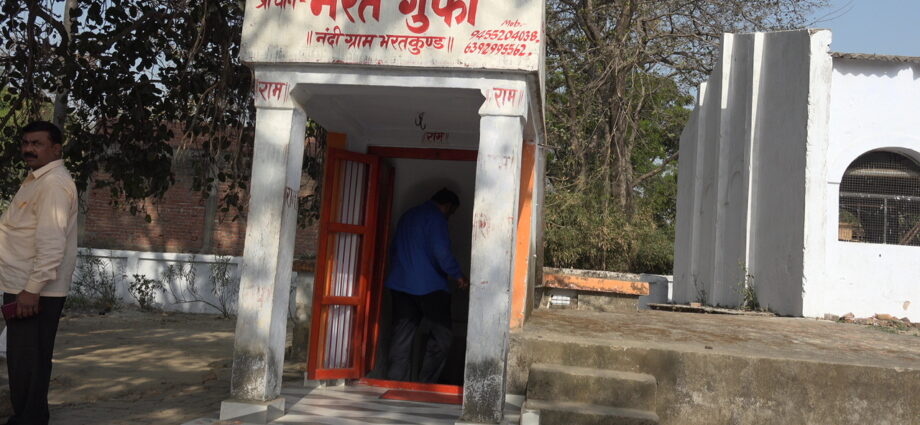Your visit to Ayodhya will not be complete without visiting Nandigram. During the exile of Lord Rama, his younger brother King Bharata ruled from Nandigram instead of the kingdom’s capital Ayodhya. It is located 19 km south of Ayodhya city.
Bharat was the second eldest son of King Dasharatha and his Queen Kekayi. And he played an extraordinary role in the Ramayana story.
According to the Ramayana, after King Dasharatha decided to crown Lord Rama as his successor, Bharat was away in his mother’s native place, Kekaya.
When he learned about his father’s decision to send Ram to 14-year long exile, Bharata was devastated. He hurriedly returned to Ayodhya. He was angry with his mother, on whose insistence that Rama was being exiled. Later he went to convince Rama to return to Ayodhya.
However, Lord Rama refused to return to Ayodhya, insisting he would not defy his father’s wish. Finally, a disappointed Bharata returned to Ayodhya, put Rama’s sandals on the throne, and retired to Nandigram.
For the next 14 years, Bharata lived like a hermit, meditating and sleeping in a cave and ruling Ayodhya as a caretaker of the rightful ruler of Lord Rama.
A small underground temple in Nandigram commemorates that event.
A large banyan tree also symbolises the meeting of Bharat and Rama’s most faithful attendant Lord Hanuman.
Bharat Kund
Another place of attraction just a few steps away from the Nandigram temple complex is a sacred pond called Bharat Kund. It is believed to be where King Bharata used to sit and wait for his brother’s return from exile.
The pond is said to have been created by Nandi, the bull of Lord Shiva. It is believed that a dip in the pond can cleanse one of sin and bring good luck.

